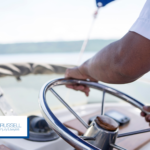The warmer months are here and that means enjoying the sun and summer activities. Boating is incredibly popular with things to do like tubbing, water skiing, fishing, or swimming out in the lake. These are all fun things to de-stress and enjoy this sunny season, but nevertheless, it is crucial to be aware of boat safety rules and regulations. According to the Canadian Red Cross there are over 125+ preventable boating-related fatalities that happen across Canada each year.
If you are your loved ones are planning on enjoying some time on a boat this summer, then here are some ways to prepare for the ride and minimize the risk of injury:
Make a Checklist
It is easy to get caught up in the excitement of getting out on a boat— having a thorough checklist to go over before taking off is a great way to be prepared for any possible emergencies out on the water.
Check the Weather
Take a look at the local weather forecast. The days leading up to your departure is crucial to ensuring you are aware of any possibly changes that could put you in danger. Avoid strong or rough winds, darkening clouds, temperature fluxes, or changes to the waves. Getting caught in a storm can result in serious injury to you or your passengers. If you find yourself in this position our lawyers at Dye & Russell know what to do to get you the compensation you deserve. Do not delay, contact us today if you have sustained injuries or damages on a boat in Ontario.
Develop a Float Plan
Inform a family member or marina staff of your contact information and emergency plan of action. Letting someone know this information along with trip destinations, the warning or help signals to be used, and your boats registration information can be critical in getting you to safety if an emergency occurs. Even the most experienced boaters can sustain injuries or be involved in accidents out on the water. Dye & Russell has the experience to help in your boating accident personal injury case.
Have your tools ready
There are many items that you need to have onboard to ensure everyone is safe while out on the water. Some items and equipment you will need but are not limited to:
- Life jackets
- First aid kit
- Sunscreen
- Food and water
- Proper identification, licenses, boat documentation
- Cellphone and wireless charging bank
- Electrical tape
- Emergency flashlight
- Distress signals
- Fire extinguisher
- Extra fuel
- Emergency paddles
- Blankets
Wear A Life Jacket
Did you know the Red Cross reported that less than 50% of Canadians always wear their life jackets when boating? Life jackets are crucial in the prevention of accidental drownings and even help in preventing hypothermia when exposed to cold water conditions for too long.
Besides being a legal requirement, another reason to have life jackets on board is for individuals that may not know how to swim or are generally weak swimmers. In the event of an accident where flooding occurs and your boat begins taking on water, the risk of a slip and fall injury increases. Wearing a life jacket can save a life if someone were to slip and fall into the water or experience a head injury.
Exploring the many great lakes and waters that Canada has to offer is exciting but knowing proper boat safety is key in achieving an accident-free summer. There are many opportunities for injury with all of the different types of activities to enjoy in or on the water, knowing who to contact in the wake of an accident will reduce the stress and anxiety related to your injury.
If you or a loved one has been involved in an accident, contact the professionals at Dye & Russell today for your FREE Claim Assessment and more helpful resources. Reach us toll free at 1-877-883-6171 or visit us online to speak with a live agent. Your road to recovery is important to us.







